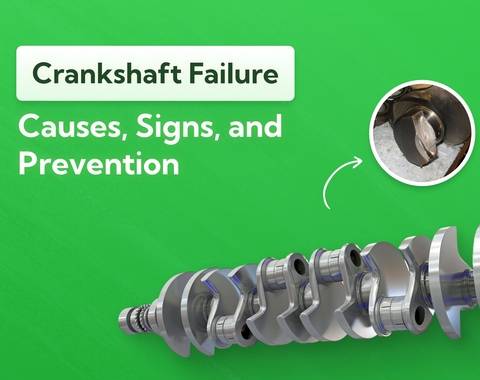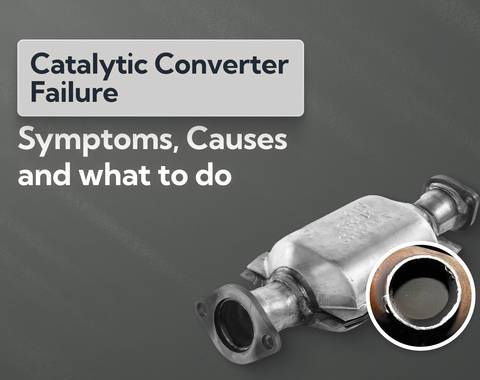Why Is My Car Tax So High? (What You Can Do About It)
In this blog, we’ll cover everything you need to know about why your car tax is so high, explain how you can instantly check your car tax for free, and look at long-term strategies to manage your car tax in the future.
Last updated: 19th November, 2025

Award-winning CEO driving growth and social impact across automotive, recycling, and technology-led enterprise platforms.

Listen to this story
Many motorists are asking, “Why is my car tax so high?”, especially after the latest Rachel Reeves car tax budget in April 2025. The fact is, car tax is a hugely complicated area, affected by factors that include registration date, engine size, carbon emissions… and even things like axle counts and levy rates for commercial vehicles! There are some exemptions available, too, for example, if you claim certain benefits for disability.
The goalposts also change regularly when it comes to VED. For example, electric vehicles originally enjoyed road tax exemptions, but these were removed in 2025, to the dismay of many EV drivers who had invested in clean cars to support low-carbon goals. Let’s cover what you need to know.
What's in this article
How is Car Tax Calculated in the UK?
Car tax is more formally known as Vehicle Excise Duty, or VED. Like many things to do with taxation, it’s not an easy calculation!
In fact, motorists all pay different levels of car tax based on factors such as the year that their car was registered, its fuel type, and carbon emissions. And just to make things even more confusing, there are possible surcharges… and also some exemptions.
These are the factors that combine to come up with a car tax calculation. Buckle up, as it requires some work to understand where your vehicle falls into the VED brackets!
| Contributing VED factor | Detail |
|---|---|
| Co2 emissions |
|
| Engine size and date of registration |
|
| Fuel Type |
|
| Luxury / Expensive car supplement |
|
| Electric vehicles and low-emission vehicles |
|
Where can I check my road tax?
Asking “How much is my car tax?”. If you’re not sure how much car tax you need to pay, it’s quick and easy to check it for any type of vehicle with our handy checker.
Main Reasons Why Your Car Tax Is High
If you’re asking, “Why is my car tax so high?”, it’s time to drill down to the different factors that affect it. Here are the five areas that influence the amount of VED that you pay.
High CO₂ Emissions and Environmental Bands
Carbon emissions are a key factor in how much you’ll pay for car tax in year one. So, for example:
- If your car’s emissions are over 255g/km, this can put you into the ‘showroom tax’ bracket, of up to £5490 in year one. This resource is useful. Note that you’ll pay more for some diesel engines registered after 1st April 2025.
You’ll see that the changes imposed from April 2025 significantly increased first-year VED costs. In fact, many bands saw the charges double.
Engine Size and Vehicle Weight
If your car was registered before 2001, it’s taxed according to engine size. If it’s more than 1549 cc, you’ll pay more (£360 a year). Older vehicles tend to be exempt from carbon emission calculations, but if they’re more powerful or heavier, they’re subject to a higher VED tax.
Fuel Type (Diesel Surcharge, Petrol vs EV)
Diesel cars not meeting RDE2 standards face steeper initial charges. Up until April 2025, many hybrids and plug-in vehicles enjoyed reduced or zero VED in year one; now those breaks are largely gone.
Year of Registration and Policy Shifts Over Time
Government VED policies have shifted over time, so the date of your car registration impacts the amount of road tax you’ll pay. If your car was registered before 2017, it’ll be in a more favourable tax band.
If your car was registered after 2017, it’ll pay the first year showroom tax, then move to the flat rate system. The latest government road tax overhaul was introduced in 2025. This brought in huge changes to band pricing and EV tax treatments.
Luxury Car Supplement for Expensive Vehicles
Asking “Why is my car tax so high?”. Look at what it’s worth. In April 2017, the luxury car supplement for expensive vehicles was introduced. As a result, vehicles priced at £40,000 or above at first registration pay a surcharge of £425 for years two to six.
Many new EVs are now included in this surcharge, as an exemption designed to benefit electric vehicles came to an end in April 2025. Further changes may yet occur. The government is reviewing the £40,000 threshold to factor in rising vehicle costs and the impact of inflation.
What the experts say

Anthony Sharkey
Comparing Car Tax Rates by Vehicle Type
The type of vehicle also impacts how much car tax you’ll pay. Let’s look in more detail:
Petrol and Diesel Cars
For petrol and diesel cars, the first-year tax rate is based on carbon emissions. The tax rate changes in 2025 saw VED charges increase significantly. Some car tax bands doubled as a result. First-year tax is based on CO₂; rates have increased sharply from April 2025, some bands have doubled.
Hybrid Vehicles
Car tax for hybrids once included discounts, but these have ended. Hybrid vehicles are now required to pay the full rate of VED based on their emissions, and they get no special concessions.
Fully Electric Vehicles
The change in tax treatment for electric vehicles was a real kicker for drivers who had invested in EV technology to support the low-carbon economy. Before March 2025, EVs were exempt from VED, which was a serious incentive to choose these low-carbon vehicles.
However, from April 2025, they will now pay £10 car road tax in year one, and the standard rate of £195 afterwards.
Furthermore, if they’re valued at over £40,000 upon registration, they also now have to pay the luxury car supplement of £425 a year. (This has had consequences on the EV manufacturing industry, with manufacturers adjusting their prices to keep new electric vehicles under this £40,000 threshold.)
Vans, Motorhomes, and Commercial Vehicles
For motorhomes registered after 2017, the first-year rates are similar to car VED and based on carbon emissions. Vans, HGVs, and other commercial vehicles pay road tax according to their weight, emissions, axle count, and levy rates, and the tables are more complicated.
Policy Changes That Affect Your Car Tax Bill
As ever, government policies change and taxation rules shift over time. Motorists can anticipate future policy and taxation directions by keeping abreast of what’s happening in the industry, and where government priorities lie (usually at the intersection of Net Zero ambitions and the need for tax receipts).
Here are some key things to know.
UK Budget Updates and New Tax Rules
The latest change in terms of Rachel Reeves car tax was the VED overhaul in April 2025.
- EVs lost their prior VED exemption
- The tax bands were revised (e.g., made more expensive)
- Electric vehicles lost their £10 discount, and
- The expensive car supplement was extended to EV vehicles over £40,000.
How Environmental Targets Influence Rates
This is an interesting topic in its own right. The government needs to balance the move towards its Net Zero commitment, whilst still securing tax receipts. So, Rachel Reeves would argue that it made sense to phase out EV tax breaks and increase road tax based on carbon emissions.
However, some critics have argued that policies are inconsistent, especially when viewed with policies in Europe. For example, the SUV tax is lower in the UK than in Europe.)
2025 and Future Changes to Road Tax Policy
The 2025 changes to road tax were already significant, and brought in the increased surcharge whilst ending EV exemptions. The government has said that it will review the £40,000 threshold in light of rising inflation, but nothing has been confirmed as yet.
It’s widely expected that further fiscal or green policy changes will come online in future, but nothing is yet confirmed.
What about Pay Per Mile Tax?
There has already been talk of possible ‘pay-per-mile’ taxes to make VED taxation fairer and increase the burden on individuals and businesses that use road systems most intensively, but the government has not confirmed any plans to do this.
Think tanks have said that a Pay-per-mile tax would make taxation fairer. It could potentially replace VED, fuel duty, congestion charges, low-emission zone payments and toll road fees into one single annual payment, calculated at the point of MOT.
What You Can Do If Your Car Tax Is Too High
Asking “Why is my car tax so high?” You’re not the only one! Car tax has become more expensive for most drivers, especially since the latest 2025 changes. However, there are strategies you can take in the long term to manage your car tax costs.
Long-Term Strategies to Manage Car Tax Costs
Factor these methods into your vehicle choices and management:
Researching Before Buying a New Car
This tip is key. Do these three things:
- Do your research before you buy a new car and choose vehicles that have low carbon emissions to keep the first-year car tax as low as possible. Asking “how much is my car tax?” Use our Free car tax check to instantly get the information you need. Just enter the registration number of any car that you’re interested in, and it will tell you its VED status, when its current road tax runs out, how much it costs to renew, and whether it’s currently registered as a SORN vehicle.
- To avoid the luxury car supplement, avoid any new car purchases over £40,000. Alternatively, haggle for a discount at the dealership to reflect the higher road tax.
- For the lowest tax bands, consider older vehicles registered before 1st April 2017.
Using Tools to Estimate Future Tax Bills
The Government website lets you check for the vehicle status of any car with the registration and V5C details. And our free car tax tracker, tells you everything you need to know in an instant.
Keeping Insurance, MOT, and Tax in Sync
Make sure your vehicle is insured, taxed, and MOT compliant. Remember that the DVLA uses electronic records to check insurance and MOT status. If your car is off the road, remember to submit a SORN application so that you’re not paying road tax.
Final Thoughts
Since April 2025, UK car tax has become increasingly complex and expensive. The first-year VED rates have gone up, incentives for low-emission vehicles have been removed, and EVs now face a similar charging structure to petrol and diesel cars (as well as the luxury surcharge if they’re high value).
It helps to keep these things in mind when you buy a new car. With so many costs associated with buying and running a car, factors like road tax, insurance, servicing and MPG efficiency all make a massive difference to what you pay overall.
Smart motorists will stay informed to know exactly what’s happening in the industry, keep abreast of policy changes and rules to see how these are likely to evolve, and master the art of negotiation to get the best possible prices at car purchase time!
Frequently asked questions
As mind-blowing as it might be, even identical cars can pay different levels of road tax. This is because VED is charged on the basis of different factors like carbon emissions, the registration date and the fuel type.
The luxury surcharge is another factor. If you buy yours new at £40,500 and your friend buys theirs new at £39,500, you’ll pay the £425 surcharge in years 2-6, and they won’t!
Yes, and this is some compensation for an ageing car! The first year showroom tax is based on emissions, and after this, all cars move to the standard flat rate, which is currently £195 - plus the luxury surcharge if your car was listed at over £40,000 new.
For cars registered before 2017, the tax rate will stay the same unless the bands change.
Why is my car tax so high in 2025? Because of car tax changes! The Rachel Reeves car tax update in 2025 took away EV exemptions and low-emission vehicle discounts, nearly doubled the first-year rates for many brands, and applied the expensive car surcharge to electric vehicles.
Hey it never harms to try! But seriously, yes, you can challenge a mistake at the DVLA end. This can happen if your fuel type or emissions rating has been recorded incorrectly. Check your V5C and contact the DVLA.
Sadly not. As of 2025, they pay full VED road tax based on their emissions and have no discounts.
The expensive car supplement, or luxury car supplement, is a surcharge of £425 a year, from years 2-6. It’s applied if the list price is above £40,000 at the first registration.
No, they already pay VED at the standard rates. Government policies evolve based on fiscal realities and the balance of net-zero ambitions.
Again, no. SORN is only available for current or future car status. So until you declare it and apply it correctly, you’ll still owe tax. Get on top of that SORN application if it applies to you!
So, this seems very logical… but the answer is only yes if the car was registered before 2001. For these older cars, the engine size does affect VED, and if you choose one under 1549 cc, you may pay lower tax. For newer cars, emissions are more important for road tax than engine size.
Use Gov.co.uk to research car tax bands, or use our free online checker to instantly check the VED on any car registration number.
Wondering how to tax a car, or stop paying tax on a car? You can use the government website to cancel car tax or pay for a new car tax. To change a car tax direct debit, contact the DVLA or adjust your direct debit date with your bank.
About Car.co.uk

Share on
Latest news & blogs










